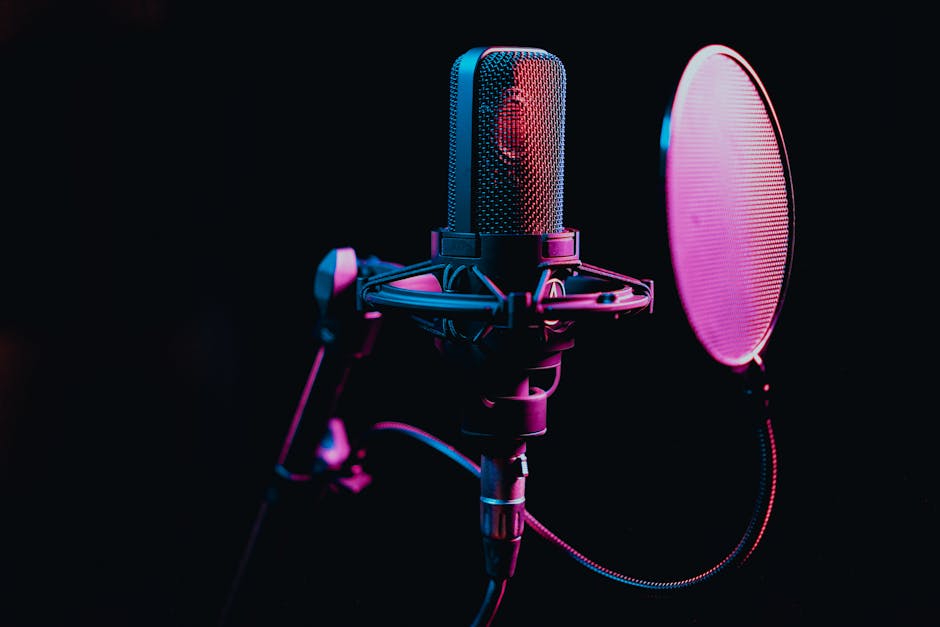My Experience with Podcast Transcriptions Services (manual Vs. Ai).
As a podcaster, I’ve always believed in the power of words, not just spoken, but written. Transcribing my podcast episodes wasn’t just a nice-to-have; it was a non-negotiable part of my strategy. From making my content accessible to a wider audience to boosting its search engine visibility, transcriptions are gold. But the journey to finding the right transcription solution felt like navigating a maze. I’ve personally dabbled in everything from painstakingly typing out every word myself (yes, really!) to experimenting with a multitude of services. This led me down two distinct paths: the meticulous world of manual transcription and the lightning-fast realm of AI-powered services. My experience with both has been a fascinating, sometimes frustrating, but ultimately enlightening learning curve. The evolving landscape of speech-to-text technology means today’s podcasters have more choices than ever, making it crucial to understand the nuances of each option.
My Initial Steps: The Allure and Reality of Manual Podcast Transcription
When I first started my podcast, the idea of manual transcription felt like the gold standard. I imagined perfect accuracy, nuanced understanding of context, and flawless speaker identification. And, for the most part, I wasn’t wrong. My initial forays into manual transcription involved either hiring freelance transcribers or, in the very early days, attempting some of it myself. The allure was simple: human ears and brains are incredibly adept at distinguishing accents, deciphering technical jargon, and understanding complex conversations, ensuring a near-perfect text representation of the audio.
What I quickly learned, however, was the stark reality of its cost and time commitment. A typical 30-minute episode could take a skilled transcriber several hours, and that time translated directly into a significant financial outlay. For a weekly podcast, this quickly became unsustainable for my budget. While the quality was often impeccable, featuring correct punctuation, precise speaker attribution, and even noting non-verbal cues (like “[laughter]” or “[pause]”), the turnaround time could also be a bottleneck. Waiting days for a transcript meant delaying my content release schedule or rushing other post-production tasks. It was a trade-off: unparalleled accuracy and human understanding versus considerable expense and slower delivery. I found myself constantly weighing the benefits of that meticulous human touch against the practicalities of running a growing podcast.
The Artisan’s Touch: Delving Deeper into Manual Transcription’s Precision
The true magic of manual transcription lies in its human element. A professional transcriber isn’t just typing words; they’re interpreting. This means accurately capturing nuances like tone, inflection, and the subtle interplay between speakers. For instance, in an interview where a guest might pause for dramatic effect or correct themselves mid-sentence, a human transcriber can convey this with appropriate punctuation (e.g., ellipses, em dashes) or even bracketed notes. AI, on the other hand, often struggles with these subtleties, sometimes omitting pauses or incorrectly punctuating self-corrections, leading to a less authentic representation of the spoken word.
Furthermore, manual services offer a level of customization that AI simply cannot match. Need specific formatting for speaker names? Want to exclude filler words like “um” or “uh” unless they convey meaning? A human transcriber can adhere to a style guide with precision. For podcasts dealing with highly sensitive topics, legal discussions, or medical terminology, this human oversight is not just a preference, but a necessity to prevent misinterpretations that could have serious implications. I once had an episode discussing obscure historical figures, and a manual transcriber not only got all the names right but also confirmed spellings, something an AI would inevitably mangle.
Embracing the AI Wave: My Journey with Automated Transcription Tools
As my podcast grew and my budget tightened, I started hearing more and more about AI transcription services. The promise was enticing: speed, affordability, and increasing accuracy. I decided to dive in, testing out several popular platforms that boasted advanced speech-to-text algorithms. My expectation was cautiously optimistic; I knew AI wouldn’t be perfect, but I hoped it would be “good enough” for a fraction of the cost and time.

The first thing that struck me was the sheer speed. Upload an audio file, and often within minutes, sometimes an hour for longer episodes, I’d have a transcript back. This was a game-changer for my workflow, allowing me to publish show notes and blog posts much faster. The cost was equally appealing, often priced per minute of audio, making it significantly more budget-friendly than human transcribers. For episodes with clear audio, single speakers, and straightforward topics, the results were surprisingly good. However, this initial excitement was often tempered by the need for significant post-production editing. AI, while powerful, still has its limitations, especially with certain audio characteristics and conversational nuances. It was a trade-off I was willing to explore further.
The Algorithmic Leap: Navigating the Landscape of AI Transcription
The evolution of AI in speech-to-text has been remarkable. Early AI tools were barely usable, but modern services leverage deep learning and vast datasets, achieving impressive accuracy rates, sometimes cited as high as 90-95% under ideal conditions. Many services now offer features like automatic speaker diarization (attempting to identify different speakers), timestamping, and even custom vocabulary options where you can preload specific proper nouns or technical terms. I found these custom vocabulary features particularly useful for my podcast, which often features niche industry terms, significantly reducing the number of errors I had to correct manually.
However, the “ideal conditions” caveat is critical. AI thrives on clear, single-speaker audio without background noise or strong accents. Introduce multiple speakers, overlapping dialogue, a guest with a heavy regional accent, or a poor microphone setup, and the accuracy can plummet. I’ve seen AI transcribe “podcast” as “pot cast” or completely miss a guest’s name, replacing it with a phonetic approximation that made no sense. While some services, like a leading AI transcription service, boast high accuracy, even they acknowledge the need for human review, especially for critical content. This highlights that while AI is a powerful tool, it’s often best viewed as a robust first draft generator rather than a final product deliverer.
Unpacking the Quality Divide: Where Manual Transcription Still Reigns Supreme
Through my direct comparisons, it became abundantly clear that certain scenarios consistently favored manual transcription for superior quality. The primary area where human transcribers truly shine is in handling complex audio and nuanced dialogue. If your podcast features multiple speakers, especially if they interrupt each other or have distinct accents, AI can struggle significantly with speaker identification. I often received transcripts where entire sections were attributed to the wrong person, creating a confusing read. Similarly, for podcasts with technical jargon, industry-specific terminology, or discussions involving proper nouns that aren’t widely known, AI often produces phonetic approximations that are completely incorrect. A human transcriber, with the ability to research or infer context, can accurately capture these terms.
Another critical advantage of manual services is their ability to interpret context and tone. AI might transcribe a sarcastic comment literally, missing the underlying intent. Human transcribers can correctly punctuate to reflect pauses, questions, or exclamations that convey meaning, whereas AI sometimes defaults to a more robotic, flat punctuation style. For podcasts where the exact wording and emotional nuance are paramount – think investigative journalism, deeply personal storytelling, or academic discussions – the investment in manual transcription is often justified. It ensures that the integrity of the spoken word, with all its subtleties, is perfectly preserved in text, which is crucial for Boost Your Podcast’s SEO and maintaining credibility.
Decoding Nuance: When Human Ears Outperform Algorithms
Consider the difference in how each service handles homophones – words that sound alike but have different meanings and spellings (e.g., “to,” “too,” “two”). An AI might choose the most common spelling, but a human understands the sentence’s context and selects the correct one every time. This seemingly small detail can drastically alter the meaning of a sentence, especially in educational or instructional content. For example, “They’re going to fair” versus “They’re going to fare” – a human knows the difference. This level of contextual intelligence is something that current AI, despite its advancements, still struggles to replicate consistently.
Furthermore, human transcribers are adept at handling “dirty audio” – recordings with background noise, poor microphone quality,




Post Comment